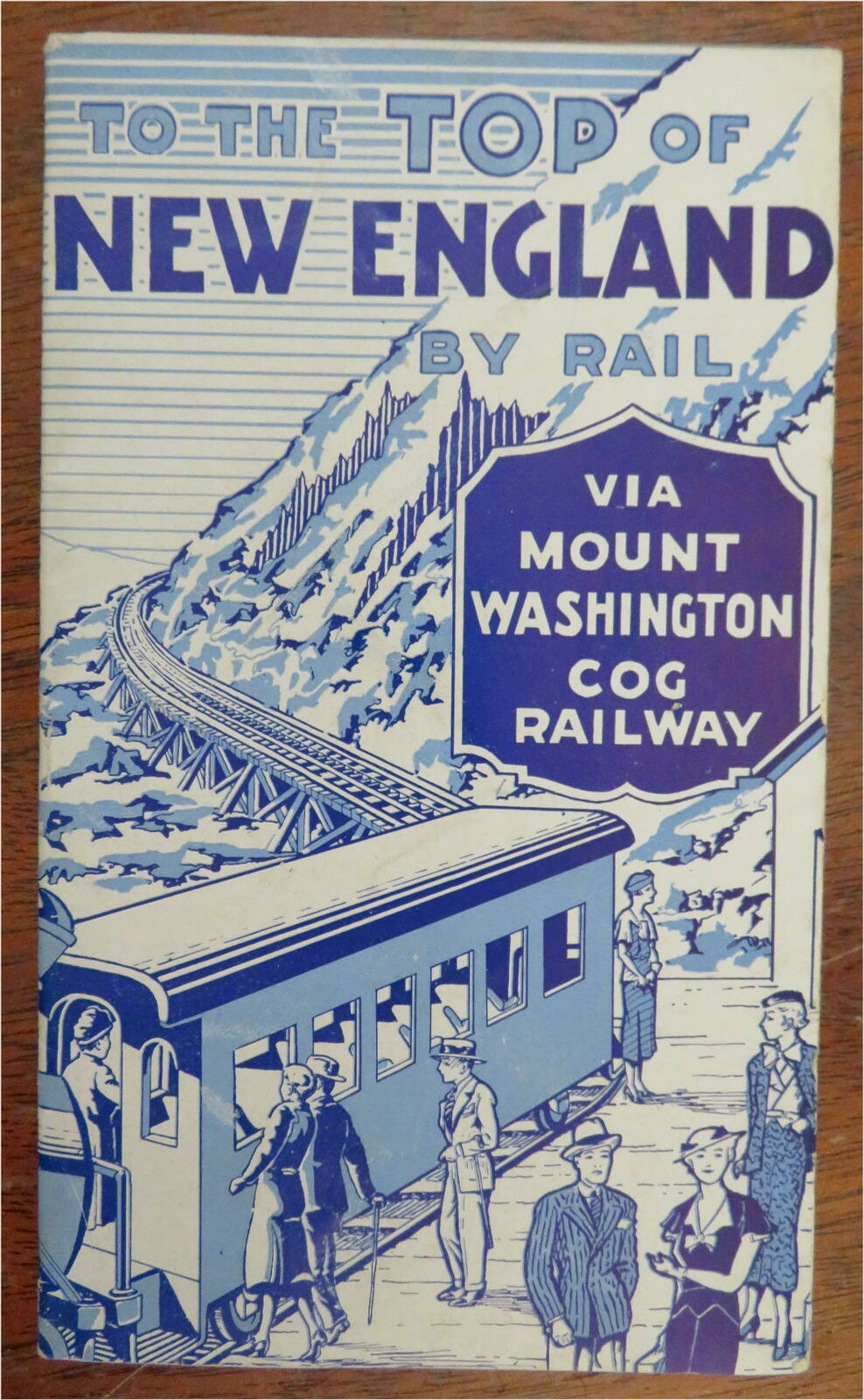In the spider-haunted Haverhill offices of the amateur journal Tryout, Lovecraft wrote the first of his published summer travelogues. It was a hasty, jotted affair, written to please the venerable old editor and give him some copy. But it was published and thus gives us a clear account of what he was doing and where he was going in the second half of August 1927. It appeared in Tryout for September 1927, titled “The Trip of Theobald”. One small point it reveals is Lovecraft’s first real experience of genuine mountains. As a young boy he may well have glimpsed some in a hazy blue distance from a train, but here he means mountains ‘up close’…
Saturday took a cheap excursion to the White Mountains — saw real mountains for the first time in my life, and had some superb views at Crawford Notch. Ascended Mt. Washington by cog-wheel railway, and had some splendid views on the way up, though it rained just as I reached the summit. (from “The Trip of Theobald”)
Postcards suggest it would have been quite an excursion by rail, with elevated bridges sweeping across deep gorges and the view climbing every higher….

From there he sent Donald Wandrei a postcard of “The Flume, Franconia Notch, White Mountains, NH”.

Note the ‘face’ that greets visitors, with an eel-like fish-head alongside it…

Further along the Franconia Notch…

Franconia Notch appears to be where the “Old Man of the Mountains” was, and presumably still is, located or at least to be viewed. This seems a natural place for an excursion to visit. My feeling is that the day’s itinerary was: Franconia Notch and the Old Man; Crawford Notch; and then the ascent of Mount Washington. The high stone head cannot have influenced Dream-quest, since the draft had been completed by 22nd January 1927 — unless Lovecraft knew of the excursion and was researching his August trip for summer 1927 before Dream-quest.

The postcard to Donald Wandrei appears to be the only evidence he was at Franconia Notch. But Lovecraft definitely mentions the Crawford Notch and its view. Here we see the train entering the ‘gate’ of the Crawford Notch…

And one of the views, once arrived there…

S.T. Joshi notes that elevations “less than 6,300 feet above sea level” are not technically mountains, despite this large region being sold to tourists in the 1920s and 30s as ‘The Switzerland of America’. But they were impressive nonetheless and — unlike Tolkien who had by then walked the high passes of the actual Switzerland — Lovecraft had nothing to compare them with. In 1929 he recalled their “grandeur”, in a letter to Derleth…
in northern New England we see the same type of landscape features on an enhanced scale – with a ruggedness which now and then (as in the White Mountains and some parts of Vermont) ascends into positive grandeur.
By 1932 he had still not seen a comparable sight. He recalled for Miss Toldrige in August 1932…
I wouldn’t mind seeing some good-sized mountains sooner or later — my mountainous experience having been confined to a single excursion (1927) to New Hampshire’s White Mountains, On that occasion I took the cog-wheel railway up Mt. Washington, but was deprived by sudden mists of a view from the summit. Still, it was spectral up there — with no sign of the earth below, & cosmic winds sweeping by from out of the unknown depths of space. I felt more isolated from this planet — & more potentially in touch with the unplumbed abysses of outer ether — than on any other occasion. The image lingers, & I may make fictional use of it sooner or later.
The cog-wheel railway up Mt. Washington began at the base station…

Here day-trip passengers disembarked and boarded a special high-level ‘mountain train’, seen here in a brochure-leaflet of the period…


Coming down must have been a bit of a hair-raiser, too.
The same brochure reveals the summit was ‘arctic’ in nature.

Lovecraft had already written At the Mountains of Madness by this point, and one wonders what his comment on this arctic landscape — “I may make fictional use of it sooner or later” — might have led to had he lived.
Here is a view from the summit, as it was when rain and mist did not obscure…





















